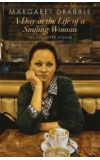
15 Apr 2013 03:29:44
The earliest story, "Hassan's Tower", features a honeymooning couple who are spending their first few days of wedded life in Morocco. But while their unvoiced worries about money and class (there's a deliciously awkward scene in which neither one of them will ask the price of some canapés) undercut the enforced romance of the experience at first, by the end the characters find their eyes opened to the interconnectedness of people.
In the title story, published in 1973, a woman who prides herself on her efficiency is confronted with the fact that "a little bit of the mechanism in me has broken". Her own body is part of this conspiracy and, as if she can longer hold it all in anymore, she seeps and leaks; the final image of her calmly addressing a room full of people while unseen blood spills from her remains an incredibly potent one.
While the earlier stories are tauter and more depersonalised, full of glinting detail, the later ones have a more sweeping, open quality. The protagonists age accordingly as the years pass, while the use of landscape features more prominently in her writing. There's a delicate sense of quest to the final story, the Wordsworth-inspired "Stepping Westward" – written in 1994, though not published until 2000 – in which a teacher treks though the Quantocks in search of something more than just the poetic. While the body remains a mutinous thing, with a tendency to break, there's more of a sense of acceptance of oneself, a feeling of potential energy yet to be spent and wonder at a world that can still surprise.

